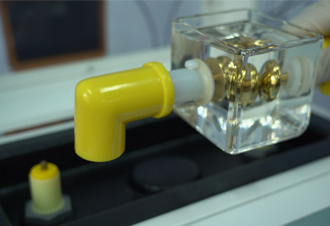 English
English


Testing and Evaluating Efficiency of Transformer Insulation Materials for Enhanced Performance and Reliability
Transformer Insulation Testing Ensuring Electrical Reliability
Transformers are pivotal components in electrical power systems, responsible for adjusting voltage levels to facilitate efficient power transmission and distribution. Ensuring their reliability and longevity is crucial, and one of the primary methods for achieving this is through insulation testing. Insulation testing helps to evaluate the condition of a transformer’s insulation system, which is essential for preventing failures, ensuring safety, and maintaining operational efficiency.
Understanding Insulation in Transformers
In transformers, insulation serves as a barrier that prevents electrical current from escaping the intended paths within the system. It protects against short circuits and leaks, which could lead to catastrophic failures, equipment damage, or safety hazards. The primary materials used for insulation in transformers include oil, paper, and various synthetic compounds. Over time, these materials can degrade due to thermal, electrical, or chemical stresses, making regular testing essential.
The Importance of Insulation Testing
Insulation testing involves assessing the integrity of the insulating materials within the transformer. It helps to detect weaknesses, moisture ingress, or degradation that could compromise the transformer's performance. Neglecting insulation testing can lead to severe consequences, including outages, costly repairs, and even accidents. Therefore, regular insulation testing is integral to a proactive maintenance strategy, ensuring transformers operate efficiently and safely.
Common Insulation Testing Methods
Several methods are employed to perform insulation testing on transformers. The most common include
1. Insulation Resistance Testing This method measures the resistance of the insulation materials using a megohmmeter. A high resistance value indicates healthy insulation, while a low value suggests potential issues that require further investigation.
2. Power Factor Testing This technique evaluates the dielectric loss of the insulating material. The power factor is calculated by applying a known voltage and measuring the current response. An increase in the power factor over time indicates insulation deterioration.
3. Dissipation Factor Testing Similar to power factor testing, the dissipation factor measures the efficiency of the insulation by determining energy losses within the insulating material. It helps to identify insulation weaknesses that might not be apparent through other testing methods.
transformer insulation test

4. Sweep Frequency Response (SFR) This advanced method involves applying a range of frequencies to the transformer’s windings and analyzing the response. It provides insights into insulation condition, detecting anomalies related to moisture and contamination.
5. Dielectric Response Testing This technique involves applying a voltage to the insulation and observing its dielectric properties. It offers detailed information about moisture content and insulation quality.
Best Practices for Insulation Testing
To ensure effective insulation testing, several best practices should be followed
- Routine Scheduling Insulation testing should be part of regular maintenance schedules. Frequency may depend on the transformer's operating conditions and age.
- Documentation Keeping detailed records of test results aids in trend analysis and helps identify when insulation deterioration begins.
- Qualified Personnel Testing should be conducted by trained professionals familiar with both the testing methods and the specific transformer equipment.
- Identify Stress Factors Understanding environmental and operational stress factors that could impact insulation life is crucial in prioritizing testing schedules.
Conclusion
Transformer insulation testing is an essential aspect of maintaining electrical reliability. By routinely assessing the condition of insulation materials, power utility companies and facilities can mitigate risks, prevent failures, and extend the operational lifespan of their transformers. This proactive approach not only enhances safety but also contributes to the overall efficiency of power transmission and distribution systems. In an era where energy reliability is paramount, effective insulation testing stands out as a critical practice for sustainable electric power management.
-
Differences between open cup flash point tester and closed cup flash point testerNewsOct.31,2024
-
The Reliable Load Tap ChangerNewsOct.23,2024
-
The Essential Guide to Hipot TestersNewsOct.23,2024
-
The Digital Insulation TesterNewsOct.23,2024
-
The Best Earth Loop Impedance Tester for SaleNewsOct.23,2024
-
Tan Delta Tester--The Essential Tool for Electrical Insulation TestingNewsOct.23,2024





